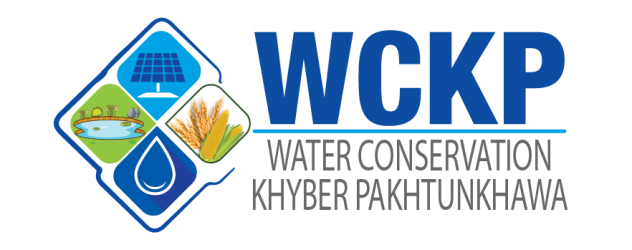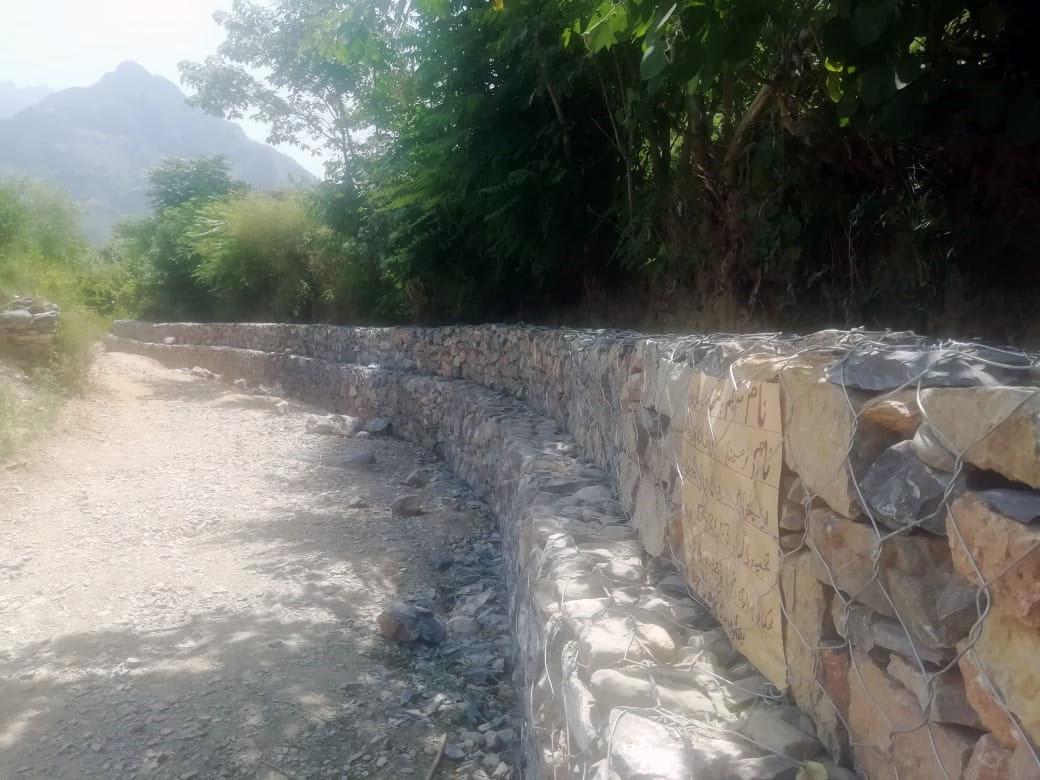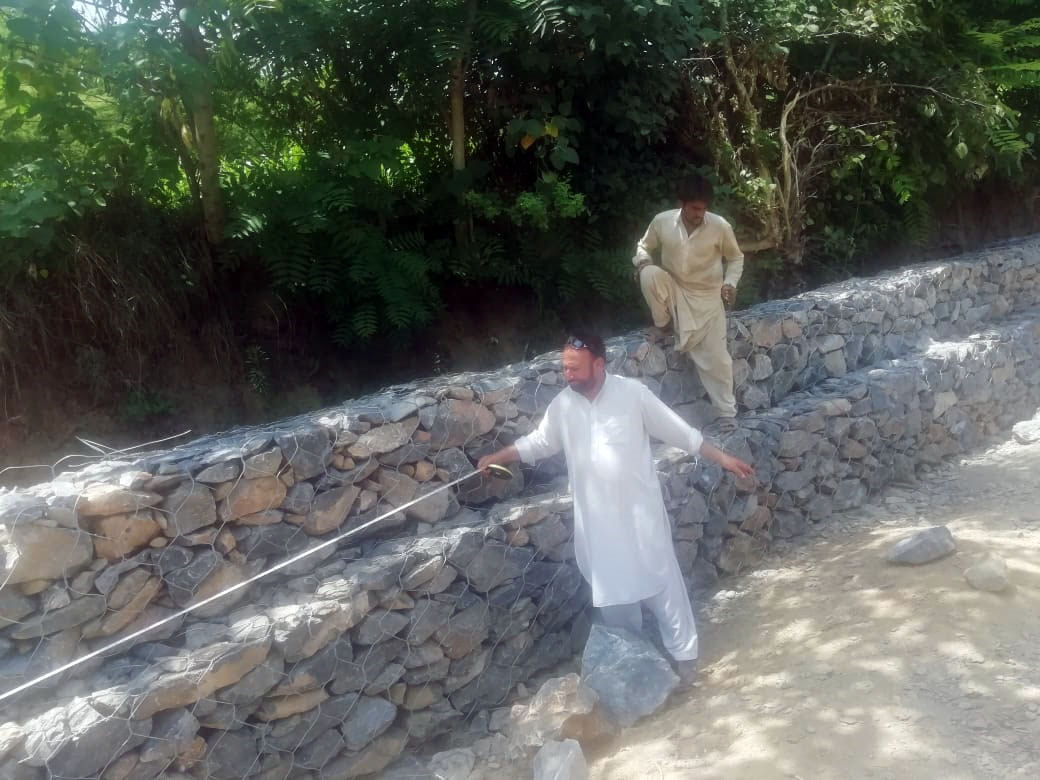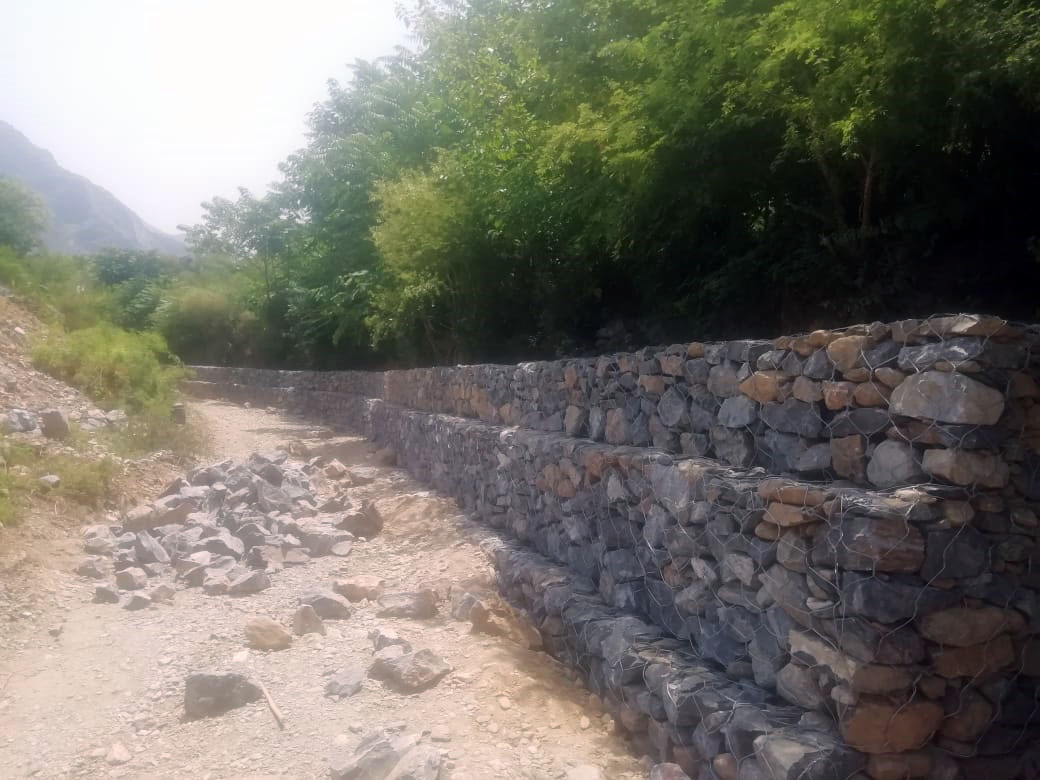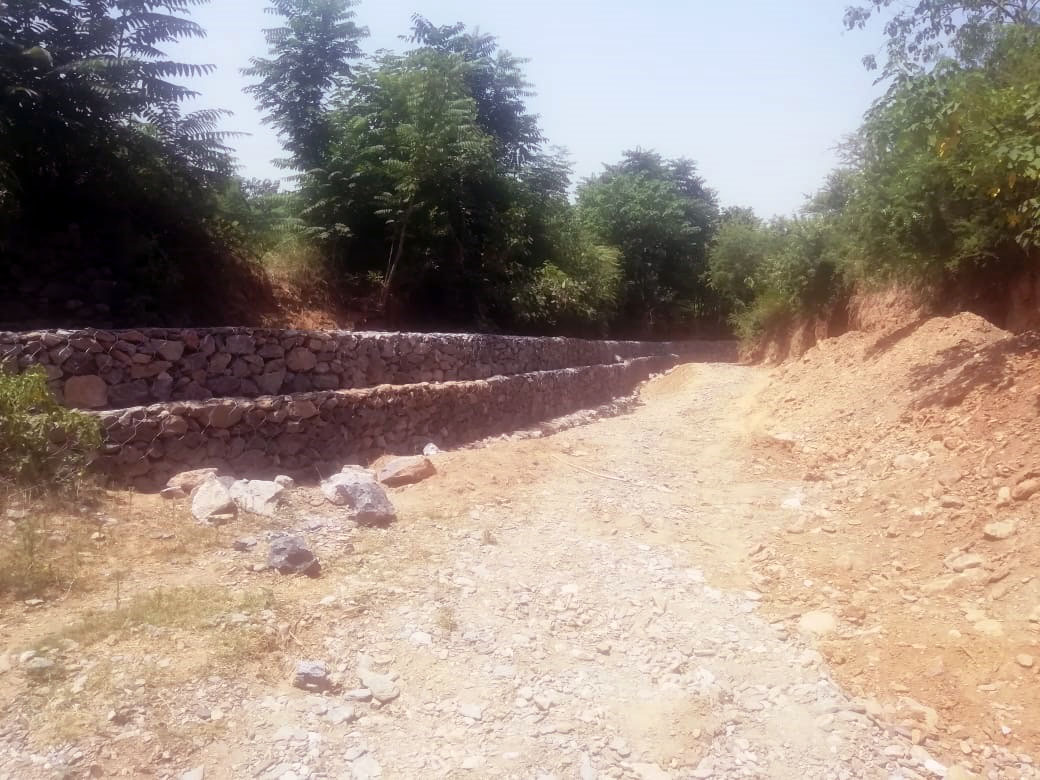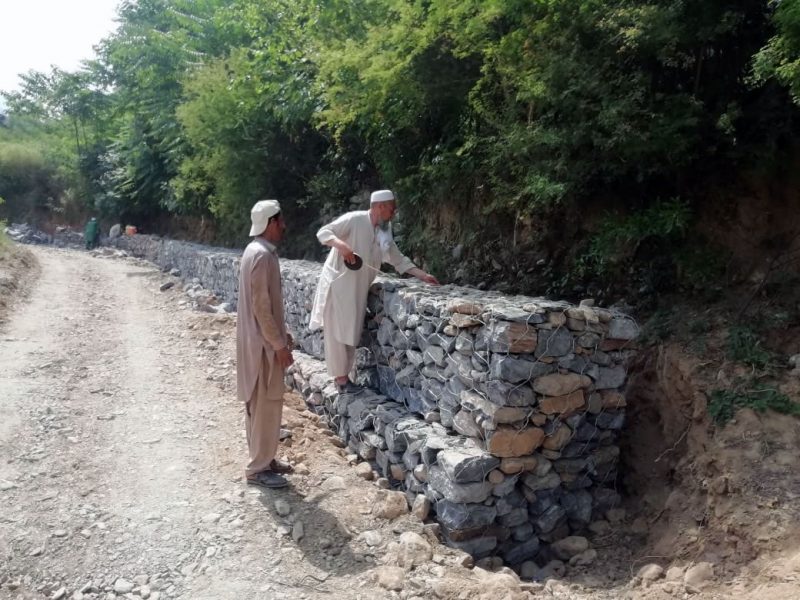STREAM-BANK STABILIZATION
INTRODUCTION
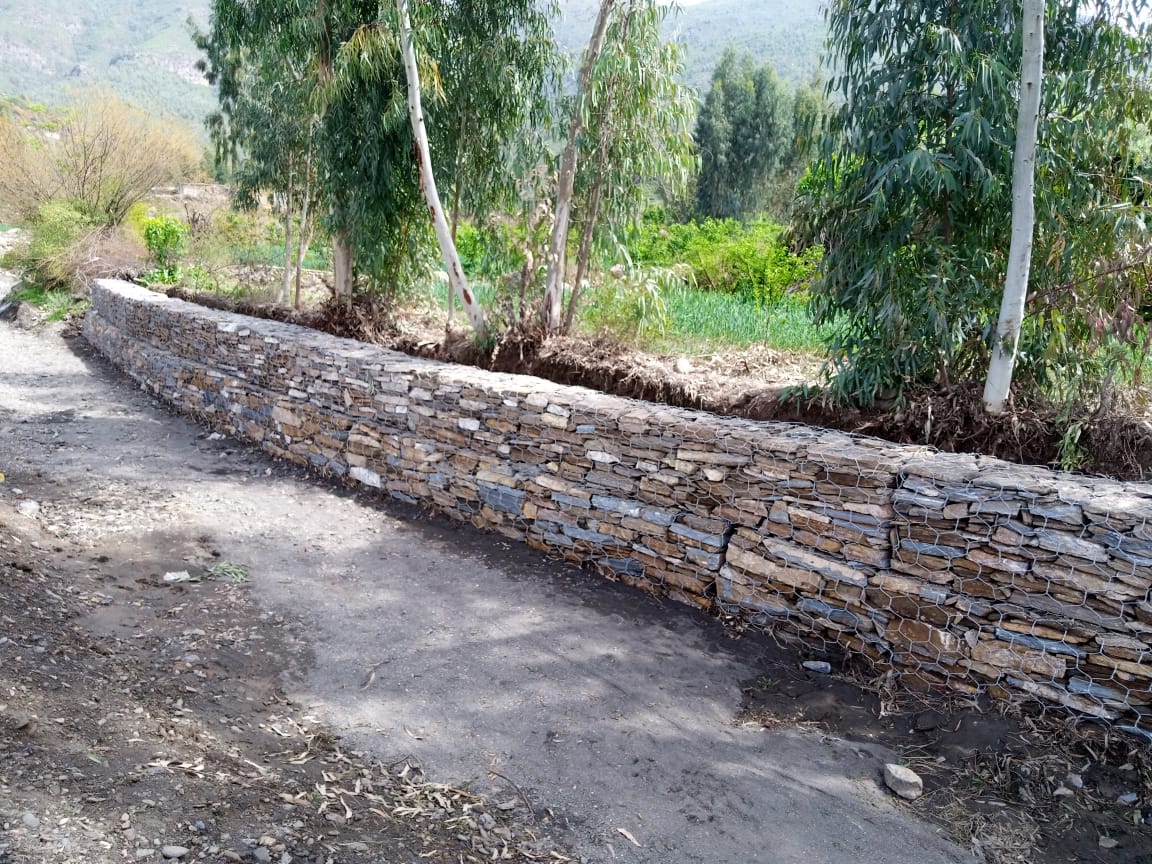
A vegetative, structural, or combination treatment of streams designed to stabilize the stream and reduce erosion is called stream bank stabilization. Stream banks are more susceptible to erosion with running water. During the rainy season, this process accelerates and hence loses precious land of the farmers. In KP, this happens too much due to its topography and climatic conditions. In the case of stream bank stabilization, we use both vegetation and engineering structures like protection bunds and spurs.

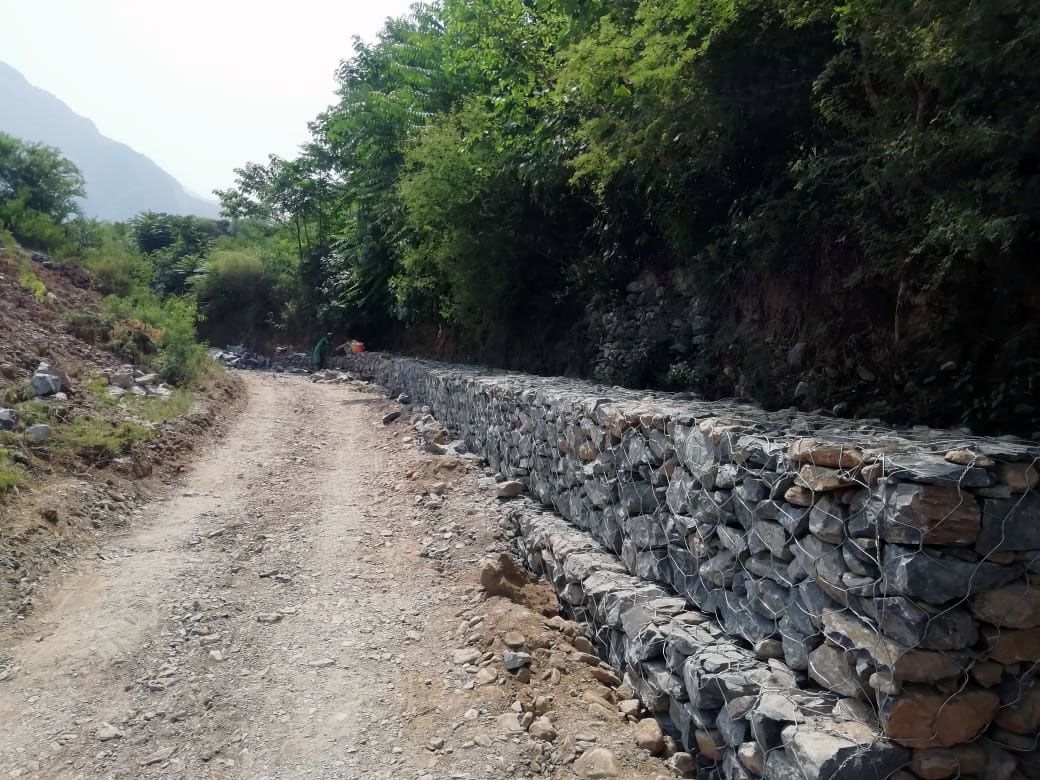
BENEFITS OF SBS

- Reducing loss of land, and reducing damage to land uses or other facilities adjacent to the banks.
- Maintaining the flow or storage capacity of the channel or impoundment.
- Reducing the downstream defects of sediment resulting from bank erosion.
- Maintaining or restoring channel waterways that enhance stream conditions.
- Improving or enhancing the stream corridor for fish and wildlife habitat, aesthetics, and recreation.
Protection of 6,250 acres of agricultural land through Execution of 2,500 stream bank stabilization works.
TARGETED IMPACTS
- Total 2500 stream bank structures will be built which will protect 6250 acres of agricultural land from flood erosion.
- Dam sediments will be reduced.
- About 20000 temporary labor will remain engaged during the construction of these Stream bank stabilization structures.
- These structures will save the landholdings of 12500 farmers.
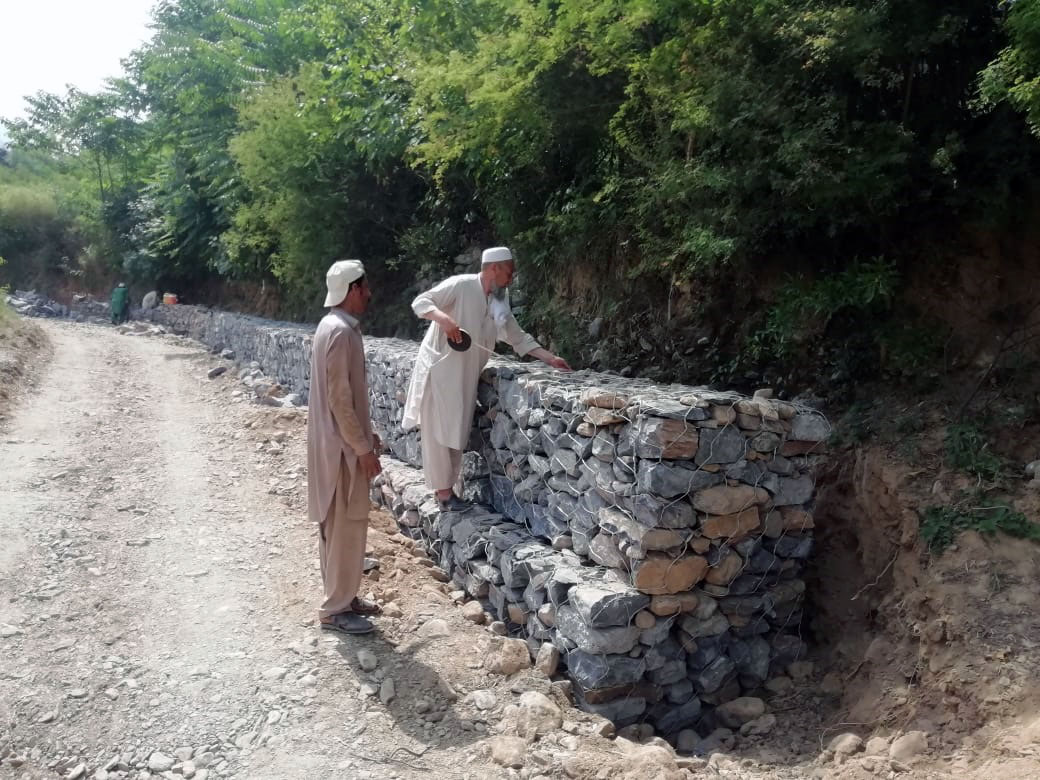
TARGETED IMPACTS
- Streambank stabilization is a structure to protect banks of streams, channels and reservoirs to reduce erosion through vegetation or engineering structures.
- Total 2500 stream bank structures will be built which will protect 6250 acres of agricultural land from flood erosion.
- Dam sediments will be reduced.
- About 20000 Temporary labor will remain engaged during the construction of these Stream bank stabilization structures.
- These structures will save the landholdings of 12500 farmers.
